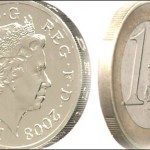Friday’s trade (in GMT terms) saw USD/CHF within the range of 0.9712-0.9820. The pair closed at 0.9804, surging 0.88% compared to Thursdays close. It has been the 14th gain in the past 23 trading days and also the sharpest one since August 26th. The daily high has been a level unseen since September 2nd, when a high of 0.9821 was registered. In weekly terms, USD/CHF added 0.50% to its value during the current week. It has been the 19th gain in the past 37 weeks and also the largest one since the week ended on August 28th. The major pair has trimmed its slump to 0.35% so far during the current month, following a 1.50% surge in August.
On Monday (September 19th) USD/CHF trading may be influenced by the following macroeconomic report listed below.
Fundamentals
United States
NAHB Housing Market Index
The National Association of Home Builders (NAHB) Housing Market Index probably remained steady at a reading of 60.0 in September, according to market expectations. If so, September would be the 27th consecutive month, when the gauge stood in the area above 50.0. In August, the sub-index of sales expectations rose to a level of 67.0 from 66.0 in the prior month, the gauge of buyer traffic slipped to 44.0 from 45.0 in July, while the gauge of current sales conditions went up to 65.0 from 63.0 in July.
The indicator is based on a monthly survey in regard to current home sales and expected sales in the coming six months. Values above the key level of 50.0 indicate that housing market conditions are good. Therefore, higher-than-projected readings would provide a moderate support to the US dollar. The official report is scheduled for release at 14:00 GMT.
US Dollar Index reaches 2.5-week highs, near-term interest rate expectations unchanged
The greenback gained ground sharply against its major peers on Friday, despite a mixed set of macroeconomic data, which came out of the United States. The initial spike came after the US Bureau of Labor Statistics reported consumer prices rose at a monthly rate of 0.2% in August, while exceeding the median forecast by analysts, following a flat performance in July. Additionally, annualized consumer inflation in the country was reported to have accelerated to 1.1% in August, again outstripping market expectations, from 0.8% in July. It has been the highest inflation rate in four months, supported by higher cost of shelter, medical care and transportation. Annualized core inflation, which does not take into account cost of food and energy, accelerated to 2.3% in August from 2.2% in July, while the market consensus pointed to a stable performance.
A separate report by Thomson Reuters/University of Michigan revealed that consumer sentiment in the United States remained flat in September. The preliminary reading of the corresponding gauge remained steady at 89.8 in September, below the median forecast by experts of 90.8, as the sub-index of current conditions dropped, while the barometer of future expectations in regard to the entire economy rose. The figure seemed to have had little effect on the US Dollar.
However, disappointing retail sales and industrial production figures from Thursday still weighed on investor expectations that the Federal Reserve will take action on interest rates at the upcoming policy meeting next week. On the other hand, rate hike probability regarding December rose above 50% once again.
According to CME’s FedWatch Tool, as of September 16th, market players saw a 12.0% chance of a rate hike occurring at the Federal Reserve’s policy meeting in September, or unchanged compared to the prior business day, and a 21.1% chance of a hike in November, also unchanged compared to the preceding day. As far as the December meeting is concerned, the probability of such a move was seen at 54.4% on September 16th, up from 47.5% in the preceding business day.
The US Dollar Index, a gauge reflecting the relative strength of the greenback against a basket of 6 other major currencies, closed at a level of 96.06 on Friday, soaring 0.82% from a day ago. During the trading day the index went up as high as 96.12, or a level unseen since September 1st. The gauge has neutralized earlier losses and is now up 0.05% so far in September, following a 0.54% advance in August.
Correlation with other Majors
Taking into account the business week ended on September 16th and the daily closing levels of the major currency pairs, we come to the following conclusions in regard to the strength of relationship:
USD/CHF to USD/CAD (0.5979, or strong)
USD/CHF to USD/JPY (0.4657, or moderate)
USD/CHF to AUD/USD (-0.4669, or moderate)
USD/CHF to NZD/USD (-0.7487, or strong)
USD/CHF to GBP/USD (-0.9340, or very strong)
USD/CHF to EUR/USD (-0.9397, or very strong)
1. During the examined period USD/CHF moved strongly in the opposite direction compared to NZD/USD, while moving strongly in one and the same direction with USD/CAD.
2. USD/CHF moved almost equally in the opposite direction compared to GBP/USD and EUR/USD during the week. This relationship has been the most pronounced between USD/CHF and EUR/USD.
Bond Yield Spread
The yield on Switzerland’s 2-year government bonds went as high as -0.874% on September 16th, after which it closed at -0.918% to add 5.7 basis points (0.057 percentage point) compared to September 15th.
Meanwhile, the yield on US 2-year government bonds climbed as high as 0.778% on September 16th, after which it fell to 0.770% at the close to add 3.6 basis points (0.036 percentage point) compared to September 15th.
The spread between 2-year US and 2-year Swiss bond yields, which reflects the flow of funds in a short term, narrowed to 1.688% on September 16th from 1.709% on September 15th.
Daily, Weekly and Monthly Pivot Levels
By employing the Camarilla calculation method, the Monday levels of importance for USD/CHF are presented as follows:
R1 – 0.9814
R2 – 0.9824
R3 (Range Resistance – Sell) – 0.9834
R4 (Long Breakout) – 0.9863
R5 (Breakout Target 1) – 0.9898
R6 (Breakout Target 2) – 0.9913
S1 – 0.9794
S2 – 0.9784
S3 (Range Support – Buy) – 0.9774
S4 (Short Breakout) – 0.9745
S5 (Breakout Target 1) – 0.9710
S6 (Breakout Target 2) – 0.9695
By using the traditional method of calculation, the weekly levels of importance for USD/CHF are presented as follows:
Central Pivot Point – 0.9771
R1 – 0.9853
R2 – 0.9901
R3 – 0.9983
R4 – 1.0064
S1 – 0.9723
S2 – 0.9641
S3 – 0.9593
S4 – 0.9544
In monthly terms, for USD/CHF we have the following pivots:
Central Pivot Point – 0.9747
R1 – 0.9956
R2 – 1.0075
R3 – 1.0284
R4 – 1.0494
S1 – 0.9628
S2 – 0.9419
S3 – 0.9300
S4 – 0.9182





